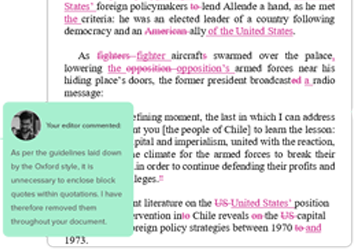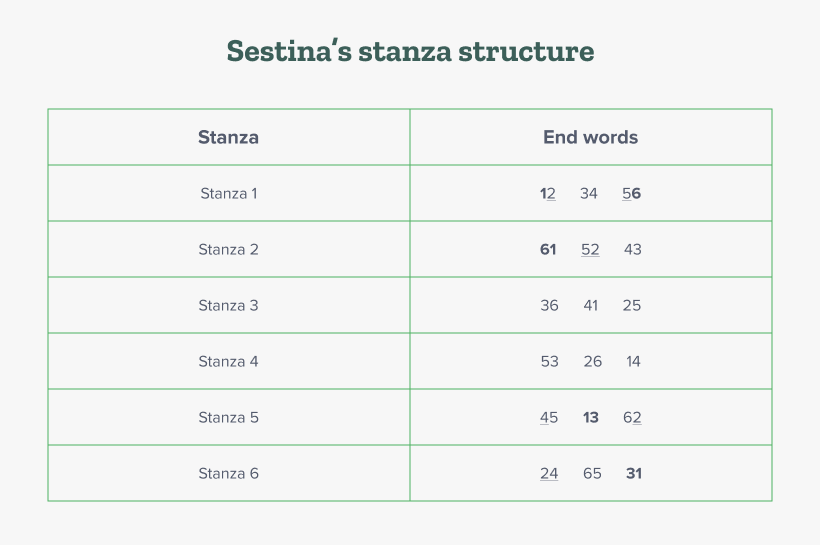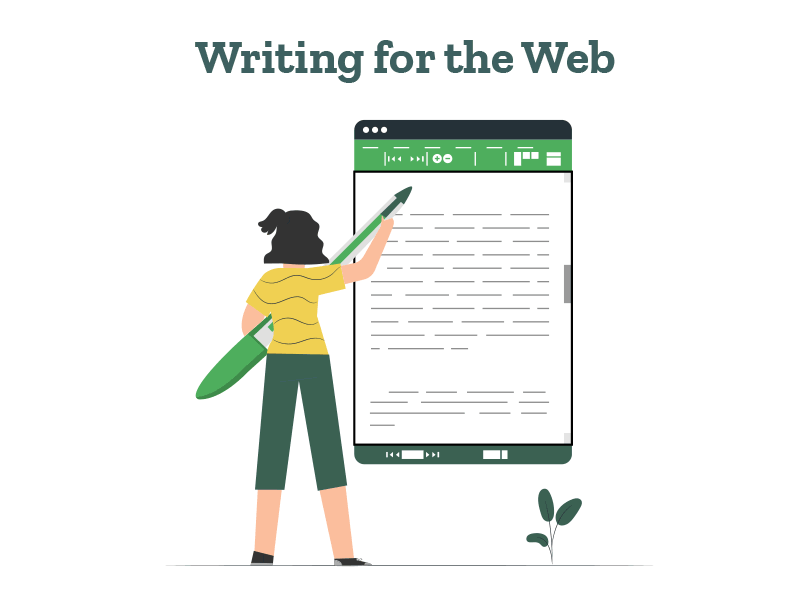- A List of Writing Contests in 2022 | Exciting Prizes!
- Em Dash vs. En Dash vs. Hyphen: When to Use Which
- Book Proofreading 101: The Beginner’s Guide
- Screenplay Editing: Importance, Cost, & Self-Editing Tips
- Screenplay Proofreading: Importance, Process, & Cost
- Script Proofreading: Rates, Process, & Proofreading Tips
- Manuscript Proofreading | Definition, Process & Standard Rates
- Tips to Write Better if English Is Your Second Language
- Novel Proofreading | Definition, Significance & Standard Rates
- Top 10 Must-Try Writing Prompt Generators in 2024
- 100+ Creative Writing Prompts for Masterful Storytelling
- Top 10 eBook Creator Tools in 2024: Free & Paid
- 50 Timeless and Unforgettable Book Covers of All Time
- What Is Flash Fiction? Definition, Examples & Types
- 80 Enchanting Christmas Writing Prompts for Your Next Story
- Your Guide to the Best eBook Readers in 2024
- Top 10 Book Review Clubs of 2025 to Share Literary Insights
- 2024’s Top 10 Self-Help Books for Better Living
- Writing Contests 2023: Cash Prizes, Free Entries, & More!
- Top 10 Book Marketing Services of 2024: Features and Costs
- What Is a Book Teaser and How to Write It: Tips and Examples
- Audiobook vs. EBook vs. Paperback in 2024: (Pros & Cons)
- How to Get a Literary Agent in 2024: The Complete Guide
- Alpha Readers: Where to Find Them and Alpha vs. Beta Readers
- Author Branding 101: How to Build a Powerful Author Brand
- A Guide on How to Write a Book Synopsis: Steps and Examples
- How to Write a Book Review (Meaning, Tips & Examples)
- 50 Best Literary Agents in the USA for Authors in 2024
- Building an Author Website: The Ultimate Guide with Examples
- Top 10 Book Printing Services for Authors in 2024
- 10 Best Free Online Grammar Checkers: Features and Ratings
- Top 10 Paraphrasing Tools for All (Free & Paid)
- Top 10 Book Editing Software in 2024 (Free & Paid)
- What Are Large Language Models and How They Work: Explained!
- Top 10 Hardcover Book Printing Services [Best of 2024]
- 2024’s Top 10 Setting Generators to Create Unique Settings
- Different Types of Characters in Stories That Steal the Show
- Top 10 Screenplay & Scriptwriting Software (Free & Paid)
- 10 Best AI Text Generators of 2024: Pros, Cons, and Prices
- Top 10 Must-Try Character Name Generators in 2024
- 10 Best AI Text Summarizers in 2024 (Free & Paid)
- 2024’s 10 Best Punctuation Checkers for Error-Free Text
- Top 10 AI Rewriters for Perfect Text in 2024 (Free & Paid)
- 11 Best Story Structures for Writers (+ Examples!)
- How to Write a Book with AI in 2024 (Free & Paid Tools)
- Writing Contests 2024: Cash Prizes & Free Entries!
- Patchwork Plagiarism: Definition, Types, & Examples
- 15 Powerful Writing Techniques for Authors in 2024
- Simple Resume Formats for Maximum Impact With Samples
- What Is a Complement in a Sentence? (Meaning, Types & Examples)
- What are Clauses? Definition, Meaning, Types, and Examples
- Persuasive Writing Guide: Techniques & Examples
- How to Paraphrase a Text (Examples + 10 Strategies!)
- 10 Best AI Writing Assistants of 2024 (Features + Pricing)
- Generative AI: Types, Impact, Advantages, Disadvantages
- A Simple Proofreading Checklist to Catch Every Mistake
- Top 10 AI Resume Checkers for Job Seekers (Free & Paid)
- 20 Best Comic Book Covers of All Time!
- How to Edit a Book: A Practical Guide with 7 Easy Steps
- How to Write an Autobiography (7 Amazing Strategies!)
- How to Publish a Comic Book: Nine Steps & Publishing Costs
- Passive and Active Voice (Meaning, Examples & Uses)
- How to Publish a Short Story & Best Publishing Platforms
- What Is Expository Writing? Types, Examples, & 10 Tips
- 10 Best Introduction Generators (Includes Free AI Tools!)
- Creative Writing: A Beginner’s Guide to Get Started
- How to Sell Books Online (Steps, Best Platforms & Tools)
- Top 10 Book Promotion Services for Authors (2025)
- 15 Different Types of Poems: Examples & Insight into Poetic Styles
- 25 Figures of Speech Simplified: Definitions and Examples
- 10 Best Book Writing Apps for Writers 2025: Free & Paid!
- Top 10 AI Humanizers of 2025 [Free & Paid Tools]
- Top 101 Bone-Chilling Horror Writing Prompts
- How to Write a Poem: Step-by-Step Guide to Writing Poetry
- Top 10 Book Writing Software, Websites, and Tools in 2025
- 100+ Amazing Short Story Ideas to Craft Unforgettable Stories
- The Top 10 Literary Devices: Definitions & Examples
- Top 10 AI Translators for High-Quality Translation in 2025
- Top 10 AI Tools for Research in 2025 (Fast & Efficient!)
- 50 Best Essay Prompts for College Students in 2025
- Top 10 Book Distribution Services for Authors in 2025
- Best 101 Greatest Fictional Characters of All Time
- Top 10 Book Title Generators of 2025
- Best Fonts and Sizes for Books: A Complete Guide
- What Is an Adjective? Definition, Usage & Examples
- How to Track Changes in Google Docs: A 7-Step Guide
- Best Book Review Sites of 2025: Top 10 Picks
- Parts of a Book: A Practical, Easy-to-Understand Guide
- What Is an Anthology? Meaning, Types, & Anthology Examples
- How to Write a Book Report | Steps, Examples & Free Template
- 10 Best Plot Generators for Engaging Storytelling in 2025
- 30 Powerful Poems About Life to Inspire and Uplift You
- What Is a Poem? Poetry Definition, Elements, & Examples
- Metonymy: Definition, Examples, and How to Use It In Writing
- 10 Best AI Detector Tools in 2025
- How to Write a CV with AI in 9 Steps (+ AI CV Builders)
- What Is an Adverb? Definition, Types, & Practical Examples
- How to Create the Perfect Book Trailer for Free
- Writing Contests 2025: Cash Prizes, Free Entries, and More!
- Top 10 Book Publishing Companies in 2025
- 14 Punctuation Marks: A Guide on How to Use with Examples!
- Translation Services: Top 10 Professional Translators (2025)
- What is a Book Copyright Page?
- Final Checklist: Is My Article Ready for Submitting to Journals?
- 8 Pre-Publishing Steps to Self-Publish Your Book
- 7 Essential Elements of a Book Cover Design
- How to Copyright Your Book in the US, UK, & India
- Beta Readers: Why You Should Know About Them in 2024
- How to Publish a Book in 2024: Essential Tips for Beginners
- ISBN Guide 2024: What Is an ISBN and How to Get an ISBN
- Book Cover Design Basics: Tips & Best Book Cover Ideas
- Why and How to Use an Author Pen Name: Guide for Authors
- How to Format a Book in 2025: 7 Tips for Book Formatting
- What is Manuscript Critique? Benefits, Process, & Cost
- How to Hire a Book Editor in 5 Practical Steps
- Self-Publishing Options for Writers
- How to Promote Your Book Using a Goodreads Author Page
- 7 Essential Elements of a Book Cover Design
- What Makes Typesetting a Pre-Publishing Essential for Every Author?
- 4 Online Publishing Platforms To Boost Your Readership
- Typesetting: An Introduction
- Quick Guide to Novel Editing (with a Self-Editing Checklist)
- 10 Best Self-Publishing Companies of 2024: Price & Royalties
- Self-Publishing vs. Traditional Publishing: 2024 Guide
- How to Publish a Book in 2024: Essential Tips for Beginners
- ISBN Guide 2024: What Is an ISBN and How to Get an ISBN
- How to Publish a Book on Amazon: 8 Easy Steps [2024 Update]
- What are Print-on-Demand Books? Cost and Process in 2024
- What Are the Standard Book Sizes for Publishing Your Book?
- Top 10 EBook Conversion Services for 2024’s Authors
- How to Market Your Book on Amazon to Maximize Sales in 2024
- Top 10 Hardcover Book Printing Services [Best of 2024]
- How to Find an Editor for Your Book in 8 Steps (+ Costs!)
- What Is Amazon Self-Publishing? Pros, Cons & Key Insights
- Manuscript Editing in 2024: Elevating Your Writing for Success
- Know Everything About How to Make an Audiobook
- A Simple 14-Point Self-Publishing Checklist for Authors
- How to Write an Engaging Author Bio: Tips and Examples
- Book Cover Design Basics: Tips & Best Book Cover Ideas
- How to Publish a Comic Book: Nine Steps & Publishing Costs
- Why and How to Use an Author Pen Name: Guide for Authors
- How to Sell Books Online (Steps, Best Platforms & Tools)
- A Simple Guide to Select the Best Self-Publishing Websites
- 10 Best Book Cover Design Services of 2025: Price & Ratings
- How Much Does It Cost to Self-Publish a Book in 2025?
- How to Self-Publish a Book: Tips and Prices (2025)
- Quick Guide to Book Editing [Complete Process & Standard Rates]
- How to Distinguish Between Genuine and Fake Literary Agents
- What is Self-Publishing? Everything You Need to Know
- How to Copyright a Book in 2025 (Costs + Free Template)
- How to start your own online publishing company?
- 8 Tips To Write Appealing Query Letters
- Self-Publishing vs. Traditional Publishing: 2024 Guide
- How to Publish a Book in 2024: Essential Tips for Beginners
- ISBN Guide 2024: What Is an ISBN and How to Get an ISBN
- What are Print-on-Demand Books? Cost and Process in 2024
- How to Write a Query Letter (Examples + Free Template)
- Third-person Point of View: Definition, Types, Examples
- How to Write an Engaging Author Bio: Tips and Examples
- How to Publish a Comic Book: Nine Steps & Publishing Costs
- Top 10 Book Publishing Companies in 2025
- How to Create Depth in Characters
- Starting Your Book With a Bang: Ways to Catch Readers’ Attention
- Research for Fiction Writers: A Complete Guide
- Short stories: Do’s and don’ts
- How to Write Dialogue: 7 Rules, 5 Tips & 65 Examples
- What Are Foil and Stock Characters? Easy Examples from Harry Potter
- How To Write Better Letters In Your Novel
- On Being Tense About Tense: What Verb Tense To Write Your Novel In
- How To Create A Stellar Plot Outline
- How to Punctuate Dialogue in Fiction
- On Being Tense about Tense: Present Tense Narratives in Novels
- The Essential Guide to Worldbuilding [from Book Editors]
- What Is Point of View? Definition, Types, & Examples in Writing
- How to Create Powerful Conflict in Your Story | Useful Examples
- How to Write a Book: A Step-by-Step Guide
- How to Write a Short Story in 6 Simple Steps
- How to Write a Novel: 8 Steps to Help You Start Writing
- What Is a Stock Character? 150 Examples from 5 Genres
- Joseph Campbell’s Hero’s Journey: Worksheet & Examples
- Novel Outline: A Proven Blueprint [+ Free Template!]
- Character Development: 7-Step Guide for Writers
- What Is NaNoWriMo? Top 7 Tips to Ace the Writing Marathon
- What Is the Setting of a Story? Meaning + 7 Expert Tips
- Theme of a Story | Meaning, Common Themes & Examples
- What Is a Blurb? Meaning, Examples & 10 Expert Tips
- What Is Show, Don’t Tell? (Meaning, Examples & 6 Tips)
- How to Write a Book Summary: Example, Tips, & Bonus Section
- How to Write a Book Description (Examples + Free Template)
- 10 Best Free AI Resume Builders to Create the Perfect CV
- A Complete Guide on How to Use ChatGPT to Write a Resume
- 10 Best AI Writer Tools Every Writer Should Know About
- How to Write a Book Title (15 Expert Tips + Examples)
- 100 Novel and Book Ideas to Start Your Book Writing Journey
- Exploring Writing Styles: Meaning, Types, and Examples
- Mastering Professional Email Writing: Steps, Tips & Examples
- How to Write a Screenplay: Expert Tips, Steps, and Examples
- Business Proposal Guide: How to Write, Examples and Template
- Different Types of Resumes: Explained with Tips and Examples
- How to Create a Memorable Protagonist (7 Expert Tips)
- How to Write an Antagonist (Examples & 7 Expert Tips)
- Writing for the Web: 7 Expert Tips for Web Content Writing
- 10 Best AI Text Generators of 2024: Pros, Cons, and Prices
- What are the Parts of a Sentence? An Easy-to-Learn Guide
- How to Avoid AI Detection in 2024 (6 Proven Techniques!)
- How to Avoid Plagiarism in 2024 (10 Effective Strategies!)
- What Is Climax Of A Story & How To Craft A Gripping Climax
- What Is a Subject of a Sentence? Meaning, Examples & Types
- Object of a Sentence: Your Comprehensive Guide
- What Is First-Person Point of View? Tips & Practical Examples
- Second-person Point of View: What Is It and Examples
- 10 Best AI Essay Outline Generators of 2024
- Third-person Point of View: Definition, Types, Examples
- The Importance of Proofreading: A Comprehensive Overview
- Patchwork Plagiarism: Definition, Types, & Examples
- Simple Resume Formats for Maximum Impact With Samples
- The Ultimate Guide to Phrases In English – Types & Examples
- Modifiers: Definition, Meaning, Types, and Examples
- What are Clauses? Definition, Meaning, Types, and Examples
- Persuasive Writing Guide: Techniques & Examples
- What Is a Simile? Meaning, Examples & How to Use Similes
- Mastering Metaphors: Definition, Types, and Examples
- 10 Best AI Writing Assistants of 2024 (Features + Pricing)
- Generative AI: Types, Impact, Advantages, Disadvantages
- How to Publish a Comic Book: Nine Steps & Publishing Costs
- Essential Grammar Rules: Master Basic & Advanced Writing Skills
- Benefits of Using an AI Writing Generator for Editing
- Hyperbole in Writing: Definition and Examples
- 15 Best ATS-Friendly ChatGPT Prompts for Resumes in 2025
- How to Write a Novel in Past Tense? 3 Steps & Examples
- 10 Best Spell Checkers of 2025: Features, Accuracy & Ranking
- Foil Character: Definition, History, & Examples
- 5 Key Elements of a Short Story: Essential Tips for Writers
- How to Write a Children’s Book: An Easy Step-by-Step Guide
- How To Write a Murder Mystery Story
- What Is an Adjective? Definition, Usage & Examples
- Metonymy: Definition, Examples, and How to Use It In Writing
- Fourth-Person Point of View: A Unique Narrative Guide
- How to Write a CV with AI in 9 Steps (+ AI CV Builders)
- What Is an Adverb? Definition, Types, & Practical Examples
- How to Write A Legal Document in 6 Easy Steps
- 10 Best AI Story Generators in 2025: Write Captivating Tales
- How to Introduce a Character Effectively
- What is Rhetoric and How to Use It in Your Writing
- How to Write a Powerful Plot in 12 Steps
- How to Make Money as a Writer: Your First $1,000 Guide
- How to Write SEO Content: Tips for SEO-Optimized Content
- Types of Introductions and Examples
- How to Create Marketing Material
Still have questions? Leave a comment

Checklist: Dissertation Proposal
Enter your email id to get the downloadable right in your inbox!

Examples: Edited Papers
Enter your email id to get the downloadable right in your inbox!
Need
Editing and
Proofreading Services?

15 Different Types of Poems: Examples & Insight into Poetic Styles
 Apr 05, 2025
Apr 05, 2025 8
min read
8
min read
Poetry is as old as human civilization, so there are innumerable types of poetry around the world. But what are the different types of poems that are well-known in English? That’s what we’ve listed here: From free verse and spoken word to the kinds of poems that have an almost mathematical structure!
In addition to traditional forms, contemporary poetry has introduced innovative styles that reflect modern themes and expressions.
We’ve arranged this list of the different types of poetry alphabetically since no other method would be nearly as clean! Here, you’ll find every type of poetry you’ve ever heard about and more. So, let’s dive into the different types of poems and examples.
What is Poetic Form?
The poetic form refers to the overall structure and organization of a poem. It encompasses elements such as rhyme schemes, meter, line length, and stanza structure, all of which contribute to the poem’s unique and expressive nature. Poetic form is not just about following rules; it’s about using these guidelines to enhance the poem’s meaning and emotional impact. By experimenting with different forms, poets can discover new ways to express their ideas and connect with their audience on a deeper level.
Here are the 15 types of poems you should know (and try to write in):
- Acrostic
- Ballad
- Concrete Poem
- Elegy
- Epic
- Found Poem
- Free Verse
- Ghazal
- Haiku
- Limerick
- Ode
- Sestina
- Sonnet
- Spoken Word
- Villanelle
It’s time for a closer look at the different types of poetry. Let’s get started!
1. Acrostic
An acrostic poem is one in which the first letters of all its lines spell out a name or a phrase. This can be any word but is usually related to the poem’s theme and may even be the title. The lines don’t have to follow a specific meter or rhyme scheme. Acrostic poems are particularly popular among children as they provide a playful and engaging way to explore creativity, allowing each line to connect back to a central theme or emotion. Let’s try making one:
Pen to paper, the magic flows,
Opening gates for imagination,
Emotion and thought, well it knows
Transcending the older, frozen tradition.a
Rumbling and roaring in every heart
Yours to master, this sacred art.
Simple and creative, this is one of the ideal types of poems for kids. You’re free to experiment with this form. You can have the end letters of the lines form your message or organize your poem around the letters that do. If you are looking for inspiration and getting help to start, you may use the AI tools available online such as an acrostic poem generator that can be a fun and easy tool to create personalized acrostics for you. A popular example of acrostic poetry is John Keat’s Acrostic: Georgiana Augusta Keats, which spells out the name of Keats’ sister-in-law, Georgiana.
2. Ballad
A ballad is a form of narrative poetry that tells a story in simple and direct language. Since ballad is a traditional form of folk poetry, its composers are often unknown. It typically features bold themes such as love, tragedy, folklore, and historical events.
Ballads often use quatrains with a refrain, making them easy to remember and pass down orally. They use dialogue to carry the story forward and are often emotionally charged. Here are some examples of ballads:
- The Rime of the Ancient Mariner by S. T. Coleridge
- The Ballad of John Henry
- Lord Randall
3. Concrete poem
A concrete poem is one in which words are formatted to create a shape that is central to its meaning. The shape and the words create a visual impact, thus mixing poetry with the visual arts. Concrete poetry dates back to Alexandria and has evolved through the ages via religious texts.
how does one quite
accommodate
this spilling verse into a vase,
then fill it to the brim, a spill-short volume
of drenching rhyme. Impossible to gather close,
unthinkable to scatter, morose, only allowing
glimpse after glimpse of a quiet world within.
a subtle invitation then to descend, but
not a drop here spilled, only wild,
sweet flowers enchanting
the gray world above.
Here are some well-known examples of concrete poem:
- Easter Wings by George Herbert
- Sonnet in the Shape of a Potted Christmas Tree by George Starbuck
- The Loophole of Retreat, or The Love Below, as Above by Alison C. Rollins
4. Elegy
An elegy is a serious poem that’s often mournful and expresses lament over death. This may be a person’s death, the end of something significant, or just death in general. The original Greek elegiac couplet was a poetic form used to talk about subjects like war, death, and love. Its evolution in English, however, has made it a death poem.
“I sometimes hold it half a sin
To put in words the grief I feel;
For words, like Nature, half reveal
And half conceal the Soul within.” —In Memoriam A. H. H. by Alfred, Lord Tennyson
The poem is long and written in a grand style as the poet mourns his close friend, Arthur Henry Hallam. Elegies in English, however, don’t have a specific form: They only have to be about death! Here are some popular examples of an elegy:
- Dirge Without Music by Edna St. Vincent Millay
- When Lilacs Last in the Dooryard Bloom’d by Walt Whitman
- Lycidas by John Milton
5. Epic poem
An epic is a long narrative poem that tells the story of legendary heroes or mythological figures. One of the earliest forms of literature, epics are typically written in an elevated style. They explore themes of heroism, adventure, and the fate of nations.
Epic poems like Homer’s The Iliad and The Odyssey are renowned for their expansive themes, intricate narratives, and cultural significance, embodying the power of storytelling through structured verse.
An epic usually places its protagonist amid vast and changing settings as he goes on a hero’s journey. This adventure is often episodic and involves supernatural intervention. Epics usually begin with an invocation to the muse, where the poet calls upon the deity for inspiration
Here are some examples of epics:
- The Iliad and The Odyssey by Homer
- The Aeneid by Virgil
- Paradise Lost by John Milton
6. Found poem
A found poem combines words and phrases from other sources by adding or removing text from the original pieces. These sources can range from other religious texts to emails, but the poet creates a new work out of them. It’s like making a collage with words!
Poets black out certain passages to reveal the poem within, or cut up lines and arrange them differently. A pure found poem consists only of found pieces and no text is added by the poet. It has evolved in the late 20th century, making it a modern poetic form.
Here are some examples of a found poem:
- Cantos by Ezra Pound (not purely a found poem)
- The Man in the Moon by Phil Rizzuto
- The Unknown by Hart Seely
7. Free verse poetry
Free verse is one of the most popular types of poems that have no rhyme scheme or meter. Free verse poetry allows poets to break free from traditional forms, offering a fluid and innovative way to express ideas without the constraints of set rhyme schemes and meter. This structure allows poets to experiment with language and rhythm, emphasizing natural speech patterns. The rise of free verse has allowed poems to become more introspective, which is often complemented with stunning imagery. This form has become a dominant style in contemporary poetry, celebrated for its conversational qualities and rhythmic flexibility.
Here are some examples of free-verse poems:
- Song of Myself by Walt Whitman
- The Waste Land by T.S. Eliot
- Howl by Allen Ginsberg
8. Ghazal
A ghazal is a poem consisting of ten to fifteen couplets, often dealing with spiritual and romantic love. These themes are usually accompanied by the pain of separation or beauty among hardship. Originating in the 7th century, the ghazal was adapted from Arabic to Persian, and then to Urdu and other South Asian languages.
A ghazal usually has a rhyme scheme of AA BA CA DA EA, and so on. Every couplet ends with the same word, called radif, which appears twice in the first couplet. The meter set in the first couplet is followed in all others. The English ghazal, however, doesn’t always follow these rules.
“Where are you now? Who lies beneath your spell tonight?
Whom else from rapture’s road will you expel tonight?
I beg for haven: Prisons, let open your gates—
A refugee from Belief seeks a cell tonight.” —Tonight by Agha Shahid Ali
Here are some other examples of a ghazal:
- Ghazal: With Prayer by Zeina Hashem Beck
- Points of Contact by Kyle Dargan
- Ghazal for White Hen Pantry by Jamila Woods
9. Haiku
Haiku is a traditional Japanese form characterized by three lines with a 5-7-5 syllable count. Perhaps the shortest of the different kinds of poems in this list, it captures a moment in nature. A haiku conveys a sense of simplicity, beauty, and impermanence. The form rose in popularity in English literature during the early to mid-20th century and was embraced by the Imagist and Beat Generation poets.
“After the shower,
among the drenched roses,
the bird thrashing in the bath” —Jack Kerouac
Note that English haiku may not always adhere to the 5-7-5 syllable structure. They do, however, capture the contemplative spirit and brevity of the traditional form.
Here are some examples of haiku:
- The Old Pond by Matsuo Basho
- In a Station of the Metro by Ezra Pound
- Haiku [for you] by Sonia Sanchez
10. Limerick
A limerick is a short poem that’s often humorous, obscene, or nonsense. It has five lines, with a rhyme scheme of AABBA. It’s written in the anapestic trimeter (three feet per line, each with two unstressed syllables followed by a stressed one). In a limerick, the first, second, and fifth lines typically have a specific number of syllables, while the third and fourth lines are characterized by a shorter syllable range, creating a distinct rhythmic pattern. It emerged in 18th-century England and was popularized by Edward Lear in the 19th century.
“There was an Old Lady of Chertsey,
Who made a remarkable curtsey;
She twirled round and round,
Till she sunk underground,
Which distressed all the people of Chertsey.” —Edward Lear
Lear wrote about 212 limericks and published them with cartoons in A Book of Nonsense. The limerick isn’t widely used today and is more popular as one of the types of poems for kids!
11. Ode
An ode is a type of lyrical poetry characterized by its formal and ceremonious style. It is typically written in a serious tone and dedicated to a particular subject. Subjects for an ode are often grand, such as love, nature, or an idea. There are three major types of odes:
Pindaric ode:
- Named after ancient Greek poet Pindar
- Formal and elaborate, with specific meter and rhyme
- Three-part structure: strophe, antistrophe, and epode
- Celebrates heroic achievements or events
Horatian ode:
- Named after Roman poet Horace
- More relaxed and less formal than the Pindaric Ode
- Varied stanza structure, often regular
- Explores themes of love, friendship, or daily life
Irregular or free ode:
- Allows structural flexibility
- Varied meter, rhyme, and stanza form
- Emphasizes creativity and individual expression
Here are some more examples of an ode:
- Olympian Ode 1 by Pindar
- Maecenas atavis edite regibus by Horace
- Ode to a Nightingale by John Keats.
12. Sestina
A sestina is an intricately structured poem with six sestets (six-line stanzas) and a three-line envoi (concluding stanza). It’s unrhymed and the end words of all six lines are repeated throughout the poem in a fixed pattern. Each stanza flips the structure of the previous stanza in a cyclical manner:

You can observe that the first and last lines, second and second-last lines, and third and third-last lines are connected in this pattern. The end words for these lines flip around to precede the other. Needless to say, this is the most complex out of all the different types of poems listed here!
Here are some examples of a sestina:
- Beautiful Poetry by Camille Guthrie
- The Complaint of Lisa by Algernon Charles Swinburne
- A sestina for a black girl who does not know how to braid hair by Taych Jackson
13. Sonnet
A sonnet is a 14-line poem often written in iambic pentameter. It traditionally explores themes of love, beauty, and nature. Shakespeare popularized the form by writing 154 sonnets, some addressing a grey lady and others, a fair youth. There are two types of sonnets.
Petrarchan sonnet:
- An octave followed by a sestet
- Rhyme schemes: ABBA ABBA CDCDCD or ABBA ABBA CDECDE
- Popularized by the Italian poet Petrarch in the 14th century.
Elizabethan sonnet:
- Three quatrains followed by a couplet
- Rhyme scheme: ABAB CDCD EFEF GG
- Most prominently used by Shakespeare in the 16th century
Here are some popular examples of the sonnet:
- How Do I Love Thee? by Elizabeth Barrett Browning
- On His Blindness by John Milton
- Sonnet 18 by William Shakespeare.
14. Spoken word
A spoken word poem is written to be performed by the poet and uses rhythm and vocal expression to achieve its full effect. Spoken word is a broad umbrella ranging from poetry recitation to jazz, rap, and hip-hop. Some spoken word poems are published, but their key characteristic is vocal aesthetics.
Since they’re meant to be performed in a social setting, spoken word poems often engage in wordplay and satire. Their themes predominantly revolve around identity and social issues. Going back to the roots of poetry itself, spoken word is hugely popular around the world.
Here are some popular examples of a spoken word poem:
- To This Day by Shane Koyczan
- Accents by Denice Frohman
- What Teachers Make by Taylor Mali
15. Villanelle
No, we’re not talking about the fictional character from Killing Eve! A villanelle is a highly structured 19-line poem with five tercets (three-line stanzas) and a final quatrain (four-line stanza). The rhyme scheme is ABA ABA ABA ABA ABA ABAA, with the first and third lines appearing as alternating refrains throughout the poem.
The repeating lines in a villanelle not only adhere to a strict rhyme scheme but also enhance the emotional intensity and lyrical quality of the poem, often reflecting themes of obsession and struggle. Confused? Take a look:
“Do not go gentle into that good night,
Old age should burn and rave at the close of day;
Rage, rage against the dying of the light.
Though wise men at their end know dark is right,
Because their words had forked no lightning they
Do not go gentle into that good night.
Good men, the last wave by, crying how bright
Their frail deeds might have danced in a green bay,
Rage, rage against the dying of the light.”
—Do Not Go Gentle into That Good Night by Dylan Thomas
Although the form originated in France, the majority of villanelles have been written in English. Here are some popular examples of a villanelle:
- Mad Girl’s Love Song by Sylvia Plath
- One Art by Elizabeth Bishop
- The Waking by Theodore Roethke
Now that you know all about the major types of poetry, you’ll probably start writing your own poems soon. If you need a second opinion, make sure to use our poetry editing services!
If you’d like to keep reading, here are some more resources:
Frequently Asked Questions

Tanvi

With a foundation in Life Sciences, Tanvi enjoys curating technical writing tips tailored for ESL students. When she's not translating complex concepts into bite-sized nuggets, she can be found playing with dogs or painting landscapes.
2 comments on “15 Different Types of Poems: Examples & Insight into Poetic Styles”
Comments are closed.






Really enjoyed this and love it 😘
I love this one it’s really amazing and easy to understand♥️📘